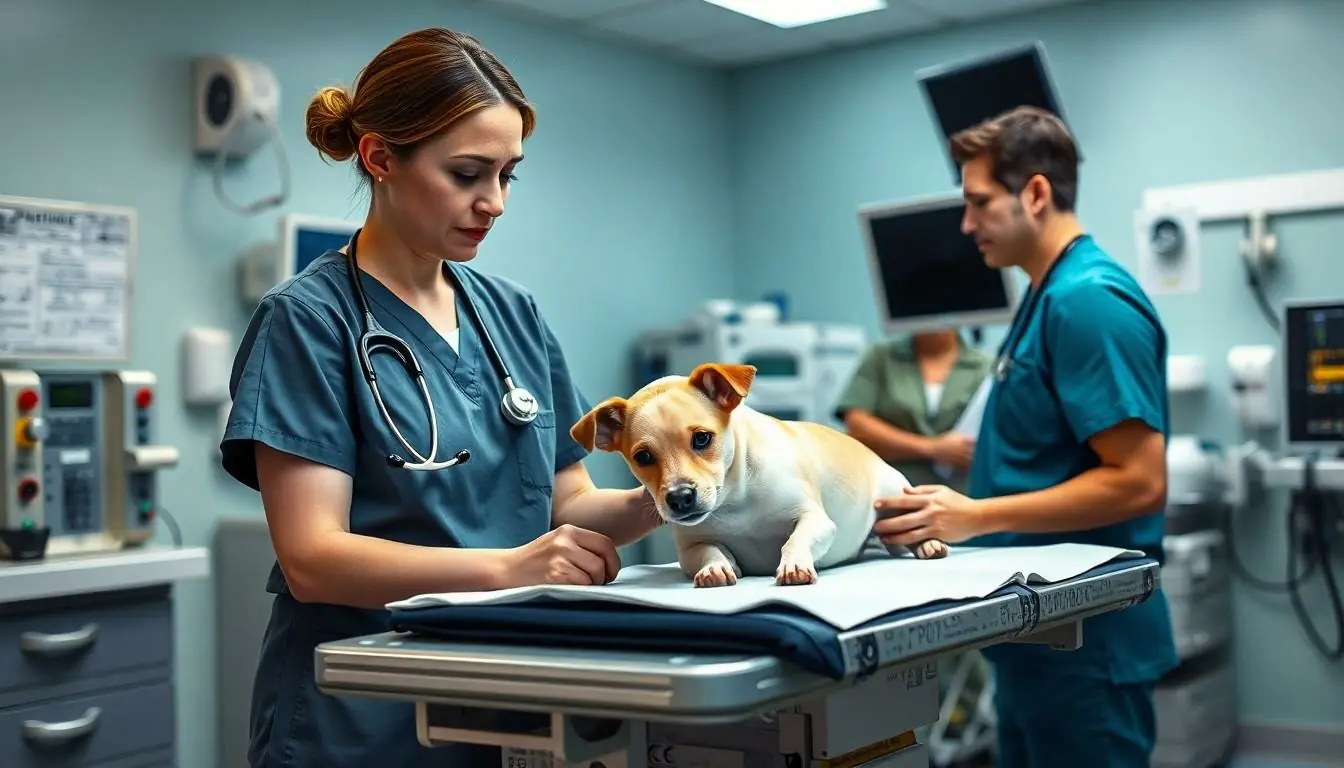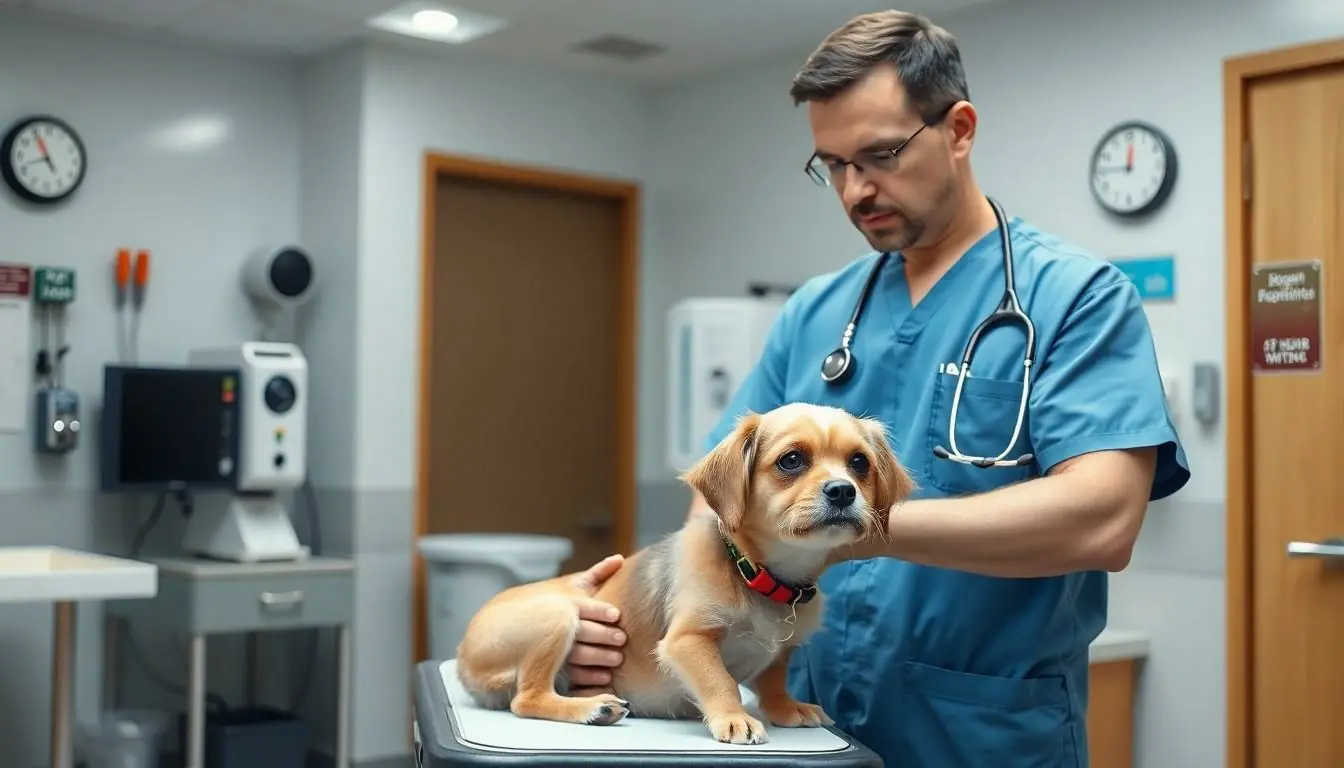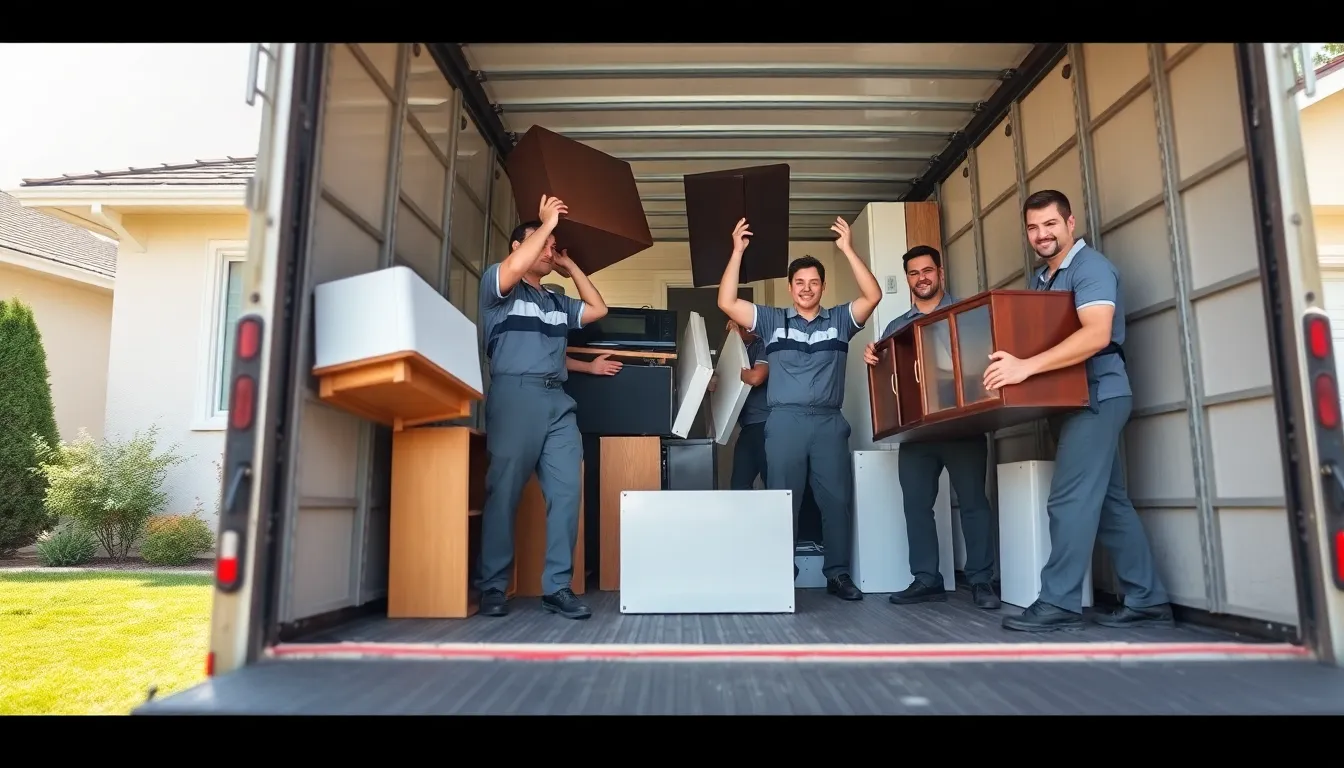When pets decide to turn their casual Monday into an episode of “ER: Animal Edition” emergency veterinary care becomes a lifeline. Just like humans medical emergencies for pets don’t stick to convenient business hours. That’s where 24/7 veterinary emergency services step in to save the day (or night).
From curious cats who’ve mistaken rubber bands for snacks to dogs who’ve turned the chocolate stash into an all-you-can-eat buffet these situations demand immediate professional attention. Emergency veterinarians stand ready to handle everything from sudden injuries and severe illnesses to those mysterious 3 AM crises that leave pet parents wondering “Is this normal?” Understanding when to seek emergency care and knowing where to find it can make all the difference in a pet’s survival and recovery.
Table of Contents
ToggleWhat Qualifies as a Veterinary Emergency
A veterinary emergency includes any life-threatening condition requiring immediate medical attention. Understanding these situations enables pet owners to make critical decisions about their pet’s care.
Common Pet Emergency Situations
- Trauma from accidents or falls
- Ingestion of toxic substances (chocolate antifreeze household chemicals)
- Severe bleeding or open wounds
- Difficulty breathing or choking
- Severe vomiting or diarrhea lasting 24+ hours
- Seizures or collapse
- Heat exhaustion or heatstroke
- Bloat or gastric dilatation-volvulus
- Animal bites or fight wounds
- Eye injuries or sudden blindness
- Birthing complications
- Suspected bone fractures
Signs Your Pet Needs Immediate Care
- Labored breathing rapid panting or blue-tinged gums
- Unresponsiveness or extreme lethargy
- Changes in body temperature (below 99°F or above 104°F)
- Inability to urinate or defecate
- Distended or hard abdomen
- Excessive bleeding or bleeding that doesn’t stop
- Loss of balance or coordination
- Multiple episodes of vomiting within 2 hours
- Ingestion of known toxins or foreign objects
- Crying out in pain or resistance to being touched
- Sudden inability to use one or more limbs
- Prolapsed tissues or organs
| Critical Signs | Time to Seek Care |
|---|---|
| Breathing difficulties | Immediate |
| Severe bleeding | Within 15 minutes |
| Toxin ingestion | Within 30 minutes |
| Trauma/injury | Within 1 hour |
| Seizures | After first episode |
Finding Emergency Vet Care Services
Locating reliable emergency veterinary care requires advance planning and understanding of available options. Creating a list of emergency veterinary providers before a crisis ensures quick access to critical care when needed.
24-Hour Animal Hospitals
24-hour animal hospitals provide round-the-clock emergency veterinary care with specialized equipment and staff. These facilities maintain fully-stocked pharmacies, diagnostic imaging machines, surgical suites and intensive care units to handle critical cases. Board-certified emergency veterinarians and specialized technicians staff these hospitals in rotating shifts to ensure continuous coverage. Many 24-hour facilities accept both walk-in emergencies and referrals from primary veterinarians.
Emergency animal hospitals stock essential medications, blood products and critical care supplies to treat severe trauma, poisonings, surgical emergencies and life-threatening conditions. The facilities feature isolation wards for contagious diseases, oxygen therapy capabilities and specialized monitoring equipment to track vital signs.
Emergency Vet Clinics vs Regular Clinics
Emergency veterinary clinics focus exclusively on urgent and critical care cases outside standard business hours. These facilities maintain advanced life support equipment, critical care expertise and diagnostic capabilities unavailable at regular clinics. Emergency clinics employ veterinarians with additional training in emergency medicine and critical care.
Regular veterinary clinics operate during set business hours and handle preventive care, routine treatments and scheduled procedures. These clinics typically refer emergency cases to specialized facilities after hours. Regular clinics build ongoing relationships with pets through wellness visits while emergency clinics focus on stabilizing critical patients. Emergency facilities charge higher fees to offset the costs of maintaining 24/7 staffing and specialized emergency equipment.
The Emergency Vet Care Process
Emergency veterinary care follows a systematic approach to assess identify treat critical conditions in pets. The process prioritizes life-saving interventions while maintaining efficient workflow protocols.
Initial Triage and Assessment
Emergency veterinary teams conduct rapid triage assessments using the ABC protocol (Airway Breathing Circulation). A veterinary technician checks vital signs including temperature heart rate respiratory rate blood pressure oxygen saturation. Critical patients receive immediate stabilization while stable patients undergo thorough physical examinations blood tests radiographs based on presenting symptoms. The triage nurse assigns color codes to patients:
- Red: Immediate life-threatening conditions requiring instant care
- Yellow: Urgent conditions needing attention within 30 minutes
- Green: Stable conditions that can wait 1-2 hours
- Blue: Non-urgent cases scheduled for later treatment
Emergency Treatment Procedures
Emergency treatment protocols focus on stabilizing critical patients through targeted interventions:
| Treatment Type | Common Applications | Response Time |
|---|---|---|
| Fluid Therapy | Shock Dehydration | 0-15 minutes |
| Oxygen Support | Respiratory Distress | Immediate |
| Pain Management | Trauma Injuries | 15-30 minutes |
| Blood Transfusion | Severe Blood Loss | 30-60 minutes |
- Establishing IV access for medication fluid administration
- Performing CPR chest tube placement wound repair
- Administering emergency medications antivenins antidotes
- Conducting emergency surgery for trauma internal injuries
- Managing seizures severe allergic reactions toxicity cases
Cost of Emergency Veterinary Care
Emergency veterinary care costs exceed standard veterinary visits due to specialized equipment requirements 24/7 staffing needs. The expenses vary based on the severity of the condition treatment procedures required.
Typical Emergency Treatment Expenses
Emergency vet visits start at $100-$200 for basic consultation fees. Critical care procedures range significantly:
| Treatment Type | Average Cost Range |
|---|---|
| Emergency Exam | $100-$200 |
| X-rays/Imaging | $200-$400 |
| Blood Work | $150-$300 |
| IV Fluids | $100-$300 |
| Emergency Surgery | $1,500-$5,000 |
| Overnight Care | $200-$500/night |
| Poison Treatment | $300-$1,000 |
| Emergency CPR | $200-$500 |
Advanced diagnostics treatments such as emergency surgery oxygen therapy cost more due to specialized equipment staffing requirements.
Payment Options and Pet Insurance
Pet owners access multiple payment methods for emergency veterinary care. Many emergency clinics accept:
- Credit cards from major providers (Visa Mastercard American Express)
- Care Credit: A healthcare credit card specifically for medical veterinary expenses
- Scratchpay: Offers payment plans specifically for veterinary care
- Pet insurance reimbursements: Companies like Trupanion Healthy Paws Nationwide cover 70-90% of emergency costs
- Payment plans: Select clinics provide internal financing options with approved credit
Pet insurance policies reduce out-of-pocket expenses when emergencies occur. Monthly premiums range from $20-$50 for basic coverage higher for comprehensive plans.
Preparing for Pet Emergencies
Pet emergency preparedness includes assembling essential supplies and organizing critical information before urgent situations arise. Advanced planning enables quick response times during medical crises.
Creating a Pet First Aid Kit
A comprehensive pet first aid kit contains specific medical supplies stored in a waterproof container. Essential items include:
- Sterile gauze pads for wound cleaning and dressing
- Self-adhering bandages for securing dressings
- Antiseptic wipes to clean injuries
- Digital thermometer for temperature monitoring
- Disposable gloves for handling wounds
- Saline solution for eye flushing
- Styptic powder to stop minor bleeding
- Pet-specific antibiotic ointment
- Clean towels for compression or restraint
- Tweezers for splinter or tick removal
- Pet-friendly medications approved by a veterinarian
Emergency Contact Information
A centralized list of emergency contacts provides quick access to vital resources during pet emergencies. Key contacts include:
- Primary veterinarian’s office phone and after-hours number
- Nearest 24-hour emergency animal hospital location and phone
- Local animal poison control center hotline
- Backup veterinary clinics within 30 minutes driving distance
- Pet insurance provider’s claims department
- Trusted neighbor who can assist with pet transport
- Mobile veterinary services that offer emergency house calls
- Animal ambulance services in the area
- Pet CPR certified professionals nearby
Store these contacts in multiple locations: phone contacts, refrigerator magnet, digital cloud storage, pet first aid kit.
Preventing Pet Medical Emergencies
Proactive pet care significantly reduces the risk of medical emergencies through routine monitoring and safety measures. Prevention strategies focus on identifying potential health issues early and creating a secure environment for pets.
Regular Health Checkups
Annual veterinary examinations detect potential health concerns before they become emergencies. These visits include comprehensive physical assessments, vaccinations based on the pet’s lifestyle and age-specific screenings. Blood work panels reveal organ function indicators, while dental examinations prevent serious infections. Veterinarians establish baseline health measurements during these visits, making it easier to spot concerning changes. Regular checkups enable early detection of conditions like heart disease, kidney dysfunction or dental disease. Pets over 7 years old benefit from bi-annual exams to monitor age-related health changes more closely.
Safety Precautions at Home
Pet-proofing creates a secure environment by eliminating common household hazards. Secure storage keeps toxic items like cleaning supplies, medications and chemicals out of reach. Electrical cord covers prevent chewing accidents that cause burns or electrocution. Pet gates block access to unsafe areas such as stairs or swimming pools. Indoor plants require careful selection since many common varieties are toxic to pets. Food storage containers prevent pets from accessing harmful items like chocolate, xylitol or raw meat. Cabinet locks stop curious pets from accessing dangerous items under sinks or in bathrooms. Window screens prevent falls from heights for cats who enjoy windowsills.
Conclusion
Emergency veterinary care serves as a crucial lifeline for pets facing critical health situations. Being prepared with knowledge about local emergency facilities payment options and basic first aid can make a significant difference in a pet’s outcome during a crisis.
Pet owners who prioritize emergency preparedness and maintain a proactive approach to their pet’s health create the best chance for positive outcomes. Having a well-thought-out emergency plan isn’t just about being ready for the worst – it’s about providing peace of mind and ensuring pets receive the immediate care they need when every minute counts.
The combination of advance planning proper preparation and quick action can truly save a pet’s life when emergencies strike. Remember: it’s always better to be overprepared than caught off guard when it comes to pet emergencies.




